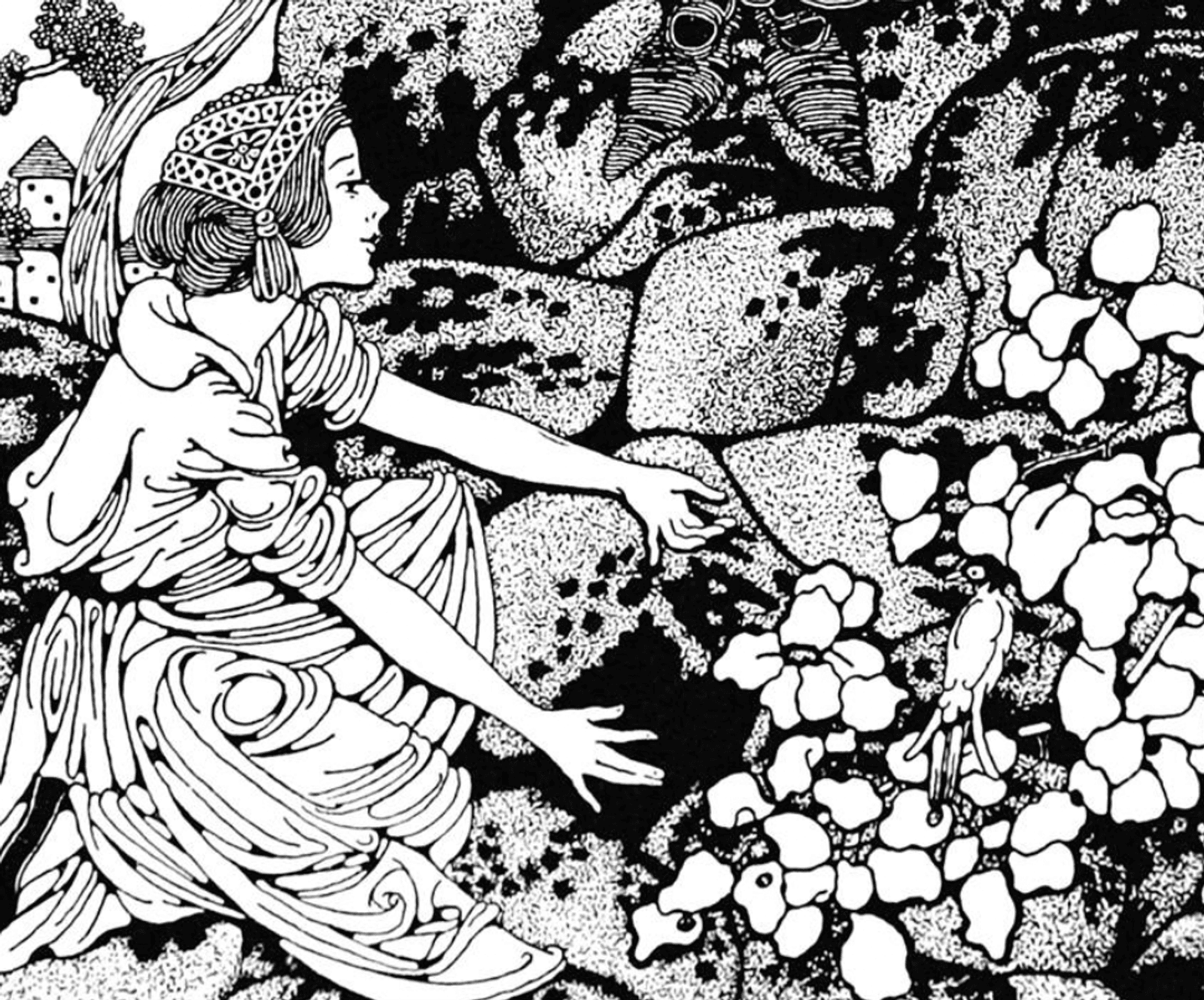A few weeks ago my oldest daughter showed me a robin’s nest that had been built on a ledge on the side of our back porch. The bird, for reasons I was never able to discover, appeared to think that the small shelf, which is about six feet high, suited her purposes better than any of our trees.
We did not begrudge her the space. While the shelf was not empty (at present it holds, among other things, an old can of whitewash, a half-empty bag of grass seed, and a rusty saw that had been left in the rain), we use it less for storage than as a kind of ersatz shipping container for things we mean to get rid of but somehow never do. In any case, the prospect of having her was an attractive one, especially for my children, who for some time talked of little else but the eggs and when they would hatch and how amusing it would be to watch the mother feed them. The only inconvenience we were put to was at night, when one of us was taking the trash out; upon seeing us near her nest, the robin—a black blur in the moonlight—would flee, and mistaking it for a bat we would rush to close the back door. (We have had bats in the house before; an old coal shovel we found when we bought the place has been requisitioned for the purpose of killing them, a duty that falls to me which the children regard with an admixture of horror and fascination.)
I know very little about birds and their habits. If put to it, I would guess I have a better chance of identifying them by sight than most Americans have. I like birdsong, and one of the pleasures of having our windows open (with screens) for three seasons of the year is being able to hear them at it all day long. But most of what I know about birds comes from poetry, if that can be considered a species of knowledge.
Compared with other common species, the robin seems to have received scant attention from the Muses. Most verses about robins come from minor poets of the sort who used to round out the pages of anthologies a hundred years ago—third-rate Irish balladeers, Transcendentalist maiden aunts, forgotten Sunday School versifiers who rise barely above the Hallmark level, and, of course, Emily Dickinson. Even Wordsworth, who called him “the bird whom Man loves best, / The pious bird with the scarlet breast,” chides his robin for chasing butterflies.
For reasons I have discussed elsewhere I think it unlikely that a first-rate poem about robins will ever be written. But one can imagine what such a poem would be like. It would somehow capture that moment in early evening when the light falls upon the robin’s breast and seems to illuminate it with an otherworldly golden fire that both is and is not the color of the sun; then darkness would come and the bird, without taking its leave, would recede into the blackness of night. The setting would not be self-consciously “poetical”—a churchyard, for example—but an ordinary suburban or small-town backyard like ours (the actual poem it would most resemble is Larkin’s “Mower,” except that we would not actually see the animal die). The conceit would be artful but not overdone, and it would have something of that curious ambivalence one finds in Gray (“Only the eternal sleep / In an eternal night”) and the Brontës, and which led Churchill, in the biography of his ancestor, to describe the Duke of Marlborough departing “for a better world or oblivion.”
But to return to the porch. One afternoon the children called to me through my office window to come to the yard. One of the fledglings had been left behind. He was, it seemed, unable to fly. For the next half hour or so, within the confines of the fence, they ran around trying to feed him. They were not cruel to the robin, who did not seem to be frightened but also could not flee. It was simply a brute fact: he was supposed to take his leave of us but was unable to do so. But he also refused to eat, even after my wife took our younger two to buy a package of night crawlers. Each time one of the children approached with a worm, the bird, so recently heedless of their presence, hopped away with a remarkable agility.
After about fifteen minutes of this, it began to rain, and we all went indoors thinking that if nothing else the wet would draw more worms out of the ground and the robin would be able to feed himself. But when we returned the next morning, expecting to find him prancing around, we found that he had indeed been able to fly or had at any rate learned to do so during the night. The previous afternoon had been a kind of harmless dalliance before his inevitable leavetaking. The children insist now that he was “playing with us,” and I really cannot think of a better way to describe it. (I have no idea how common this sort of thing is among birds, but perhaps an ornithologist can write to let me know.) This brief sojourn was not, I daresay, as poetical as the memento mori for which I might have enlisted our friend, but perhaps it is the case that certain things are truer than poetry.




